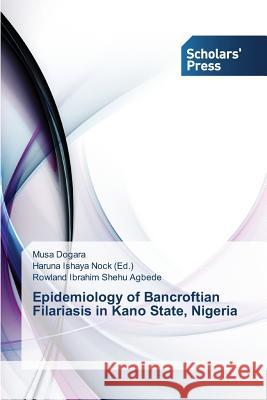Epidemiology of Bancroftian Filariasis in Kano State, Nigeria » książka
Epidemiology of Bancroftian Filariasis in Kano State, Nigeria
ISBN-13: 9783639861372 / Angielski / Miękka / 2015 / 320 str.
Bancroftian filariasis (lymphatic filariasis) is a filarial infection in humans caused by a nematode parasite Wuchereria bancrofti and is transmitted by species of mosquito such as Anopheles, Culex, Aedes and Mansonia. It is also a chronically disabling parasitic infection causing elephantiasis, lymphoedema, and hydrocoele. The disease is considered as a major obstacle to economic development in endemic countries. It has been identified by the World Health Organization in 1995 as the second leading cause of permanent and long-term disability on infected individuals. However, there are now global efforts to eliminate the disease by 2020. Nigeria is the third most endemic country in the world. The country has instituted a national programme for the elimination of the disease in 1997. For any elimination programme to succeed there is need to understand the epidemiology and distribution of the disease in the entire country. This work documents the epidemiological status of the disease and socioeconomic effects in parts of Kano state, Nigeria in order to provide baseline information required for the elimination of bancroftian filariasis.
Bancroftian filariasis (lymphatic filariasis) is a filarial infection in humans caused by a nematode parasite Wuchereria bancrofti and is transmitted by species of mosquito such as Anopheles, Culex, Aedes and Mansonia. It is also a chronically disabling parasitic infection causing elephantiasis, lymphoedema, and hydrocoele. The disease is considered as a major obstacle to economic development in endemic countries. It has been identified by the World Health Organization in 1995 as the second leading cause of permanent and long-term disability on infected individuals. However, there are now global efforts to eliminate the disease by 2020. Nigeria is the third most endemic country in the world. The country has instituted a national programme for the elimination of the disease in 1997. For any elimination programme to succeed there is need to understand the epidemiology and distribution of the disease in the entire country. This work documents the epidemiological status of the disease and socioeconomic effects in parts of Kano state, Nigeria in order to provide baseline information required for the elimination of bancroftian filariasis.











